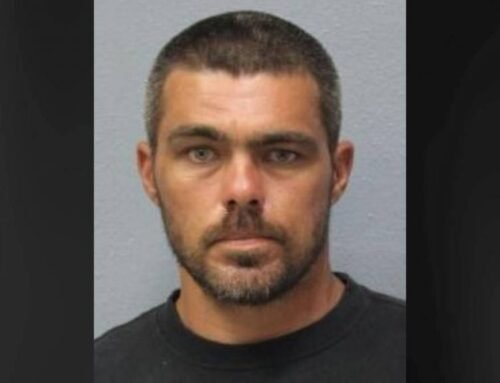It might have seemed like the end of the discussion when lawmakers killed a bill to provide $100 million over two years to build roads and utility systems for a first responders’ training facility near Mililani.
But that was no problem for the project’s main champion, Senate Ways and Means Committee Chairman Donovan Dela Cruz. He was still able to steer tens of millions of tax dollars to his pet project.
He and Ways and Means Committee Vice Chairman Gil Keith-Agaran used a “legislative adjustment” to place $50 million for the project into the Legislature’s budget bill.

The $50 million technically goes to the project’s developer: the Hawaii Technology Development Corp., a quasi-independent agency attached to the Department of Business, Economic Development and Tourism.
Jimmy Tokioka, the department’s acting director, defended both the project and Dela Cruz’s method of steering money to it.
But critics say the project and process are both flawed.
The funding for the park shows two aspects of state government often obscured from public view.
First, there are entities like the Hawaii Technology Development Corp. Attached to departments for funding and administrative purposes, the agencies are quasi-independent, governed by appointed boards composed of a mix of government and industry types. The arrangement in theory insulates the attached agencies from political influence.
In this case, however, the opposite seems to be happening. An agency that’s supposed to be developing Hawaii’s high tech economy is steering a fortune to a project unrelated to that mission, on behalf of a powerful senator.
And while the technology development corporation’s board is supposed to be independent, lawmakers this past session showed what can happen to a board member who makes waves: they passed a bill axing him from the board.
Second, there’s the legislative adjustment process, a commonly used tool that lets lawmakers fund projects without going through the more transparent process of putting specific appropriations through public hearings.
There’s nothing inherently wrong with the legislative adjustment process, said Beth Giesting, who worked on health policy for two Hawaii governors before becoming director of the Hawaii Budget and Policy Center, a nonprofit think tank. But Giesting said items added that way tend to have popular support.
“This seems unusual and questionable that they’ve got an item that nobody wants put into the budget,” said Giesting, who is now the center’s director emeritus.

It’s an overstatement to say nobody wants the first responders’ park. Officially called the First Responders Technology Campus and Cybersecurity Data Center, the project is essentially a consolidated facility for a variety of government agencies, most related to public safety. It would be located on an undeveloped site roughly the size of Kapiolani Park and the Honolulu Zoo. A recent presentation shows space for offices, warehouses, a hotel, workforce housing and a community center.
Notably, the Honolulu Police Department said it has no plans to locate to the campus if it is built.
Dela Cruz has long supported the project. Although the senator didn’t return calls for this article, for years he has peddled the idea of building the massive facility, which would be located in his district.
Dela Cruz also has argued that building a campus for public safety agencies fulfills the Hawaii Technology Development Corp.’s statutory purpose: to “facilitate the growth and development of the commercial technology industry in Hawaii.”
“Well, it’s a tech park, that’s how we labeled it from the beginning,” he told Civil Beat in 2017. “We’re dealing with cybersecurity. We’re dealing with new technology. And we have HTDC’s involvement in it.”
The Hawaii Technology Development Corp. also supports the project.
“HTDC supports initiatives aimed at growing tech and innovation jobs,” HTDC’s executive director, Len Higashi, testified in February in support of the bill.
Higashi didn’t say in his testimony how moving existing government workers from existing sites to Mililani grows tech and innovation jobs. And he didn’t return calls for comment.
Others are less convinced that the campus supports HTDC’s mission. Greg Kim is a corporate and securities attorney who specializes in helping entrepreneurs and start-ups with high growth potential. When Kim joined the HTDC board just over a year ago, he asked why HTDC was developing the project.
“I was told that we were asked to do it. It wasn’t our idea,” he said.
Kim said he hasn’t ruled out the idea that the project has merit for the entrepreneurial ecosystem the corporation is supposed to be growing, but he expressed skepticism.
“When you look at the surface of it, you have to wonder why you’re doing it,” he said.
Vasilis Syrmos, vice president for research and innovation of the University of Hawaii System, was more blunt.
“It doesn’t make too much sense to put a first responders center of that magnitude in that location,” said Syrmos, a former HTDC board member who was effectively removed from the board this session when lawmakers changed the criteria for the university’s representative to rule out the system’s chief innovation administrator from serving.
“And even if it did make sense,” he added, “how does this align with the mission of HTDC? To me that is the more fundamental question.”
Craig Nakanishi is a partner in the Cades Schutte law firm and chairman of the HTDC board. He said the corporation’s statutory purpose goes beyond helping grow and develop Hawaii’s commercial technology industry. He said the first responders park will use technology to address responses to emergencies.
“Wouldn’t it be great to use technology and innovation to solve some of Hawaii’s problems?” he said. “And that is this project.”
Acting DBEDT Director Supports Project And Funding Process
During the session, Rep. Amy Perruso came to the same conclusion as Syrmos: that the first responders park didn’t make sense. Accordingly, when the bill came to the committee she chairs, the House Higher Education and Technology Committee, she let the measure die.
But that wasn’t the end: a $50 million appropriation appeared in the budget anyway. Asked who put the money into the budget, Matt Prellberg, a spokesman for the Hawaii Senate, referred questions to Dela Cruz’s former aide, Dane Wicker, now a deputy director for DBEDT.
Wicker said the department’s first acting director, Chris Sadayasu, had requested the money.
Dela Cruz and Keith-Agaran put the $50 million into a Senate draft of the budget at Sadayasu’s urging, Wicker said.
The money will be used to create infrastructure for the Hawaii Emergency Management Agency and Enterprise Technology Services office and Honolulu Emergency Management Services operations, which plan to build facilities at the park, Wicker said.
Tokioka, whom Gov. Josh Green tapped to direct DBEDT after the Senate rejected Sadayasu’s nomination, said the project makes sense to him. Tokioka said he based his opinion on talking to firefighters during a stint as Green’s director of the state Department of Transportation’s Airports Division.
“I had many of the firefighters in the airports division asking if they could personally send in testimony” in favor of the $100 million funding bill, he said. “They strongly felt they had to have a facility like this.”
Tokioka also defended the budget process.
“I’ve seen it done that way,” said Tokioka, who served as a lawmaker before joining Green’s administration.

Whether Gov. Josh Green will go along with this remains to be seen.
Last session, Gov. David Ige rejected by line-item veto a proposed $35 million appropriation to the “Hawaii Emergency Management Agency, for infrastructure, construction, design, equipment, and site plans for the First Responder Technology Campus.” According to his veto message, Ige also struck by line-item veto a proposed $17 million appropriation to the HTDC for plans, design and land acquisition for the first responders campus.
Green could do the same or simply choose not to fund the appropriations, said Luis Salaveria, the director of the Hawaii Department of Budget and Finance. The administration will make that determination on what to fund after a review of legislative adjustments, he said.
“Everything is on the table in the review,” he said.
House Speaker Says Legislature Should Change Process
In the meantime, the experience with the first responders center funding raises questions about legislative adjustments as a tool for deciding how to spend the public’s money.
Colin Moore, a political scientist with the University of Hawaii Economic Research Organization, said the process might be at odds with images of a legislature taught in civics classes.
But he said it works on some level for lawmakers or they wouldn’t go along with it. At play, he said, is “an internal economy of favors,” or horse trading.
“Public testimony and all that doesn’t play a part in the process at all,” Moore said.
Moore also said most people have no idea that this is how their elected officials are deciding how to spend the public’s money.
“I don’t think most people have any idea,” he said. “The process is mysterious even to people who follow it very closely.”
Perruso said this needs to change.
“I think it’s a process problem that we really do need to address,” she said. She added that the first responders’ funding wasn’t the only money steered to agencies without appropriations hearings by the Legislature and without review by the governor.
“Even if it is standard practice, I think we need to have a candid conversation about it,” she said. “I don’t think it holds up to public scrutiny. I don’t think the public thinks we are holding ourselves accountable.”
House Speaker Scott Saiki said one solution could be to require all legislative appropriations to be done by appropriations bills.
“I absolutely agree with Speaker,” Perruso said. “If there’s something being added to the governor’s budget, it should be added through appropriations bills.”
“We have to do something different,” she said.







Leave A Comment